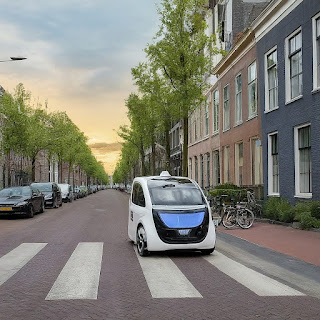Why people support and promote bicycle agenda? Some support considering it is environmentally sustainable, promotes healthy life and community; some, reconsidering their values, choices and transportation means due to new enlightenment on subject, emerging from social, professional and commercial media. Social media in a sense that captures bicycle in all its action and glory all the time; professional media in a sense every alternate post talking about subject of new mobility beyond fossil fuel; and commercial media in a sense those promoted by scores of new businesses emerging almost everyday around idea of bicycle, bicycle infrastructure, MaaS etc.
A lot is happening in this space of bicycle, micromobility and at its periphery, as its still easier for an individual or a group of people to think of building a business around the subject of bicycle, e-bicycle, e-scooters etc. So we see lot of buzz and momentum around the bicycle agenda.
Why even some of those people support bicycle agenda even if they don’t own a bicycle. Possibly they relate more bicycles with safer streets, so good for them irrespective.
There are those who own car but still support bicycle agenda, either they use less car and more bicycle and public transport OR simply to go with the popular opinion OR to distinguish themselves from other (bad?) car owners, considering themselves good car owners. This including cars of all shape, size and fuel types.
Then from a panoramic world view-
There are those who support and want to use bicycle but they don’t have access to bicycle tracks and bicycle infrastructure in their city. (They are many)
There are those individuals and dual income household who / at least one of them cannot bicycle to work due to long distance of work place. (They are many too)
Lets just not talk about role of weather here, as there are always both examples to quote.
There are those individuals and those households who can't even afford the bicycle, whether for individual or for whole family. (There are way to many)
Lets also not forget those, who cannot manage without car, or cannot manage only with bicycle, considering the kind of personal, household or professional situation they are in. (Health, ability, old dependent members, household members with special needs etc.) (There are still many)
So, contrary to the popular notion, bicycle agenda is a complex subject, its not always about either “for” or “against” if you assess subject at global level, going beyond city and neighbourhood. Typical bicycle agenda has certainly lot to do with reducing dependency on fossil fuel, health and safer streets, but researchers, planners and policy makers must consider that individual, household and community choices are not always obvious or easy.
[Views and observations are personal]

.jpg)

.jpg)
.jpg)
.jpg)

.jpg)
.jpg)
.jpg)
.jpg)
.jpg)
.jpg)
.jpg)
.jpg)